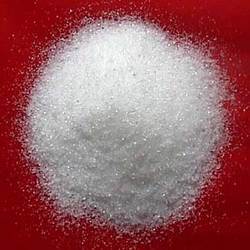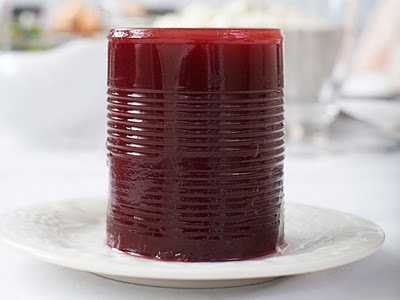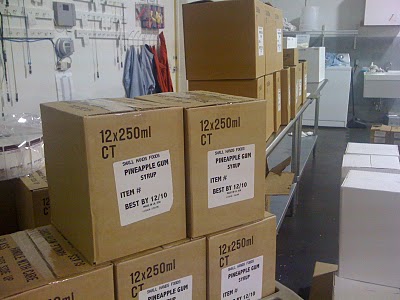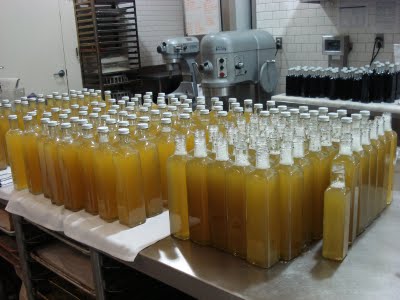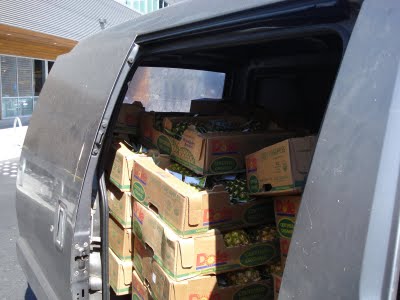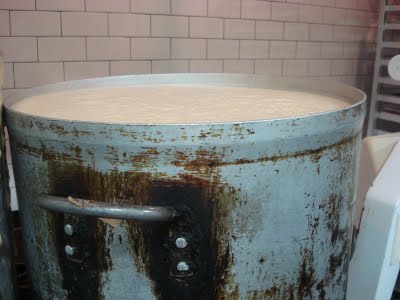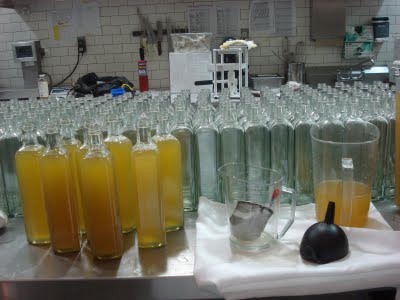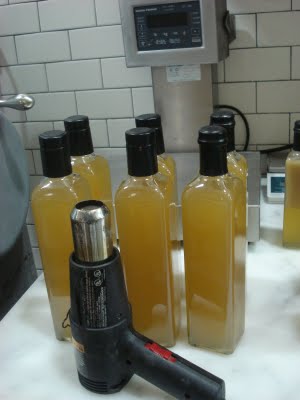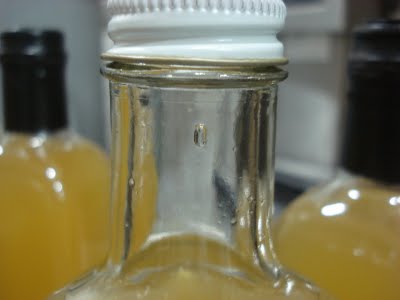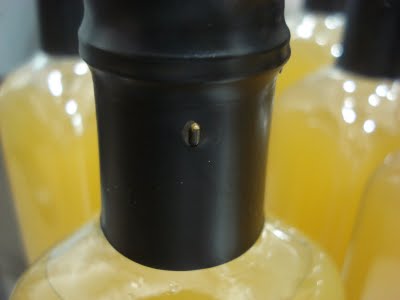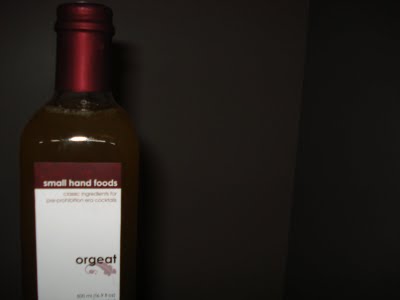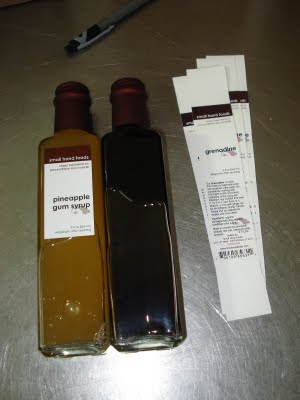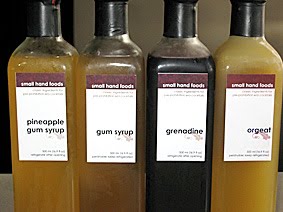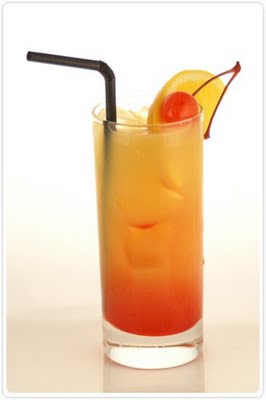I recently presented at the second annual Cocktail Camp PDX, a day-long series of seminars in Portland geared toward the home bar/spirits enthusiast. I, along with Columbine Quillen, a rockstar of a bartender/blogger from Bend, Oregon, talked about homemade syrups, sodas, bitters and tinctures. Columbine wrote about her part of the presentation here, so I won’t attempt to paraphrase her, but I will say her low-tech methods of extraction and distillation are fascinating.
at the second annual Cocktail Camp PDX, a day-long series of seminars in Portland geared toward the home bar/spirits enthusiast. I, along with Columbine Quillen, a rockstar of a bartender/blogger from Bend, Oregon, talked about homemade syrups, sodas, bitters and tinctures. Columbine wrote about her part of the presentation here, so I won’t attempt to paraphrase her, but I will say her low-tech methods of extraction and distillation are fascinating.
As for my side of things, I spoke about understanding the science behind sugar, fruit and spice, and how to exploit that science to create the best-tasting syrups possible. I must give credit to Darcy O’Neil and Harold McGee for the bulk of my content. I refer to the research both of them have done constantly. I hope I have done them justice in condensing and explaining what I feel are the pertinent aspects of syrup making.
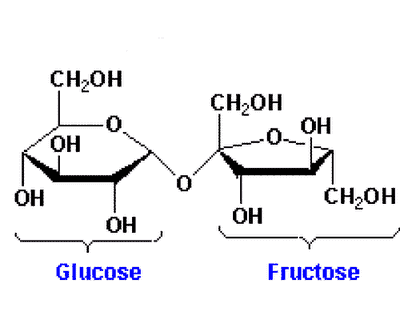 Here is a diagram of a sucrose molecule (sugar). It is comprised of a fructose molecule and a glucose molecule bonded together. When you heat it with water, you begin the inversion process whereby those bonds are broken, and you end up with fructose-glucose syrup, also known as invert syrup. It takes a while to fully invert, but heating it at all makes it partially invert. Sucrose is more viscous than either fructose or glucose. Therefore, if you make simple syrup by combining equal parts sugar and cold water and stirring or shaking until dissolved rather than heating, your simple syrup will be more viscous. Cold-dissolved simple syrup is molecularly different, and in my opinion, superior, than when it is heated.
Here is a diagram of a sucrose molecule (sugar). It is comprised of a fructose molecule and a glucose molecule bonded together. When you heat it with water, you begin the inversion process whereby those bonds are broken, and you end up with fructose-glucose syrup, also known as invert syrup. It takes a while to fully invert, but heating it at all makes it partially invert. Sucrose is more viscous than either fructose or glucose. Therefore, if you make simple syrup by combining equal parts sugar and cold water and stirring or shaking until dissolved rather than heating, your simple syrup will be more viscous. Cold-dissolved simple syrup is molecularly different, and in my opinion, superior, than when it is heated.
 This is a diagram of a fruit cell. The important part is the vacuole in the center that holds the good juicy part inside. Remember in the 90s, when every other bar had big jars of infused vodka on the back bar? After soaking for a couple of weeks, the liquid tasted fruity and delicious. But take a bite of the soaked fruit itself and it tasted terrible, like alcoholic fiber. The reason is the difference in sugar content between the fruit juice inside those vacuoles and the alcohol itself. When the sugar content (and here we’re talking fructose) is higher inside the fruit than outside, the juice will cross the cell walls via osmosis, collapsing those cells, and mix with the surrounding liquid. Thus the tasty infusion yet limp, anemic-looking fruit. In syrup making, this is what you want happening in those cell walls. You’re after the juice, not the fiber. Simmer chopped fruit in water first, strain out and discard the remains, then add sugar. This will help you get all the good stuff out of the fruit.
This is a diagram of a fruit cell. The important part is the vacuole in the center that holds the good juicy part inside. Remember in the 90s, when every other bar had big jars of infused vodka on the back bar? After soaking for a couple of weeks, the liquid tasted fruity and delicious. But take a bite of the soaked fruit itself and it tasted terrible, like alcoholic fiber. The reason is the difference in sugar content between the fruit juice inside those vacuoles and the alcohol itself. When the sugar content (and here we’re talking fructose) is higher inside the fruit than outside, the juice will cross the cell walls via osmosis, collapsing those cells, and mix with the surrounding liquid. Thus the tasty infusion yet limp, anemic-looking fruit. In syrup making, this is what you want happening in those cell walls. You’re after the juice, not the fiber. Simmer chopped fruit in water first, strain out and discard the remains, then add sugar. This will help you get all the good stuff out of the fruit.
The opposite of this is true as well. If your goal is to make delicious sweetened fruit, say, brandied cherries for example, you need to add enough sugar to the brandy so that it exceeds the natural sugar content of the cherries. The sugar then will cross the cell walls via osmosis, this time into them, bulking up those cells and creating that lovely “snap” to the skin that is so appealing in amarene cherries.
However, if you want to make a syrup from a spice, it is the essential oils in that spice you want to bring into your syrup. Oil has carbon in it, as does sugar. Water does not. As Darcy O’Neil explained to me, “like dissolves like,” so if you simmer that spice in a combination of sugar and water, the sugar will help draw out more of the aromatic compounds in the spice than simmering in water alone.
How this works for syrup-making is that if you want to make, say, a strawberry-black pepper syrup, you chop up the strawberries, simmer them in water until they are limp and pale, strain them out and discard them, then add sugar and coarsely crushed black pepper. Simmer that until you have the flavor you want. Fine-strain and enjoy!
The event overall was a great success; I had a lot of fun giving the presentation. (Actually, I nervously paced and bit my nails until it was my turn, then apologized about a dozen times for being such a nerd.) But people seemed into it nonetheless. I hope I am invited back next year!
